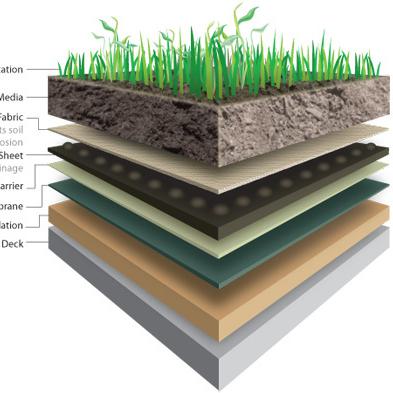A Comprehensive Analysis of the Co-Benefits and Costs of Green Infrastructure in New York City
Last Modified Feb 07, 2022
While green infrastructure is typically known as an effective way to manage stormwater runoff, the additional benefits provided may not be immediately obvious nor easily quantified. The New York City Department of Environmental Protection (DEP) conducted a study, as part of their expanding green infrastructure program, to examine the costs and benefits of green infrastructure using a triple bottom line (TBL) approach, incorporating a literature review, pilot monitoring, life-cycle analyses, and the development of a co-benefits calculator and comparison tool.
A literature review of over 100 publications was conducted to identify and help quantify the co-benefits of green infrastructure. The review was supplemented by local co-benefits monitoring, conducted at a wide array of NYC green infrastructure pilot locations. Data was collected from remote temperature sensors and time-lapse cameras, assessments of plant and soil health, and surveys of pollinator presence. Together, the literature review and monitoring evaluated co-benefits spanning carbon sequestration, urban heat island reduction, reduced energy demand, improved urban habitat, improved soil health, increased abundance and diversity of pollinators and wildlife, improved air quality, and green job creation.
The environmental and economic cost analyses of green infrastructure were derived from construction and maintenance details from existing green infrastructure controls along with SimaPro, an environmental life-cycle analysis database containing relevant carbon emissions data.
The results of the co-benefits and cost analyses were compiled into an online computing tool designed to evaluate and compare different green infrastructure control types and designs based on more than 25 quantitative cost and benefit parameters. Within the tool, these costs and benefits can also be compared against community based needs, combined with costs and benefits from other green infrastructure controls on a neighborhood scale, or displayed in a graphical head to head comparison, providing useful insight regarding the impacts NYC green infrastructure has on local communities.










